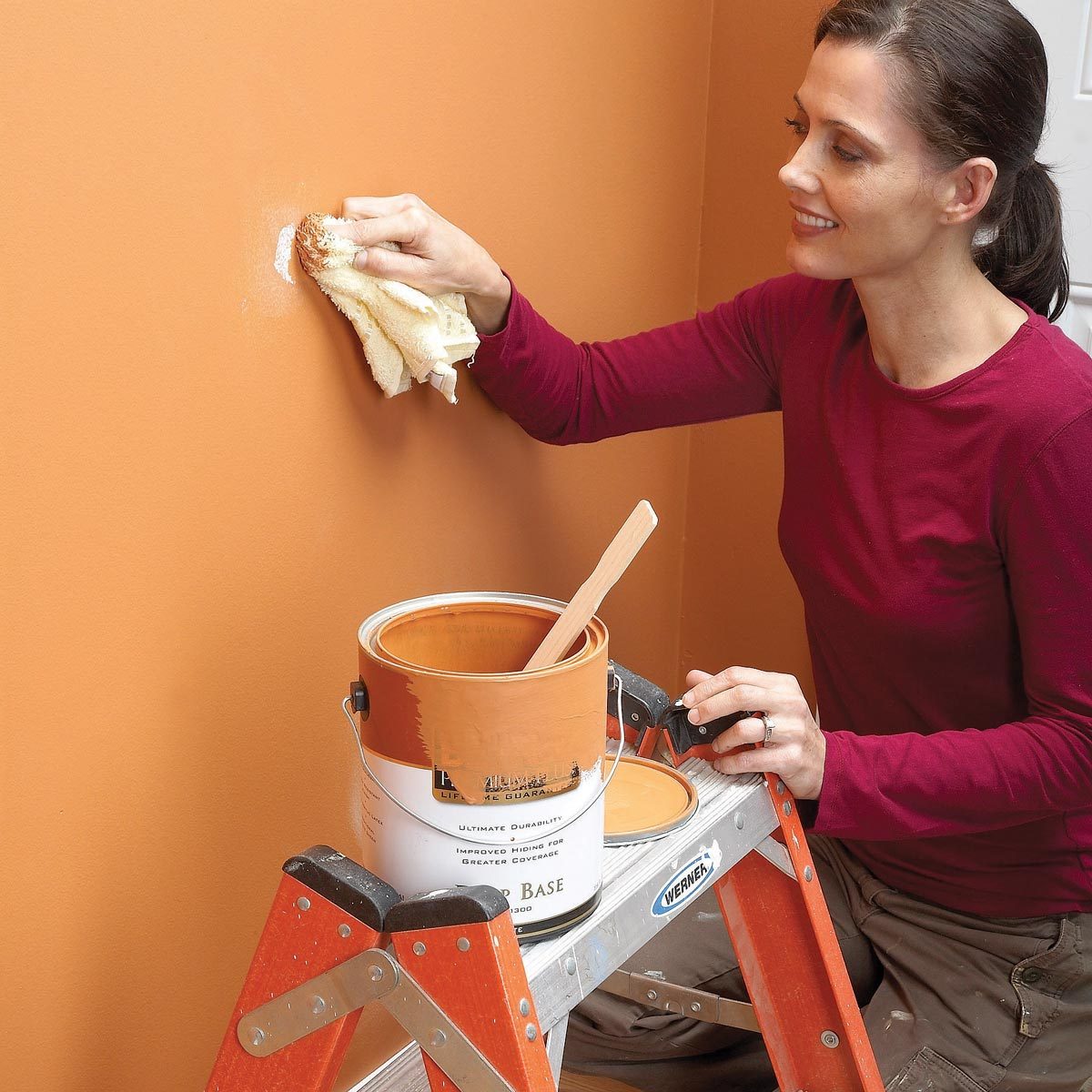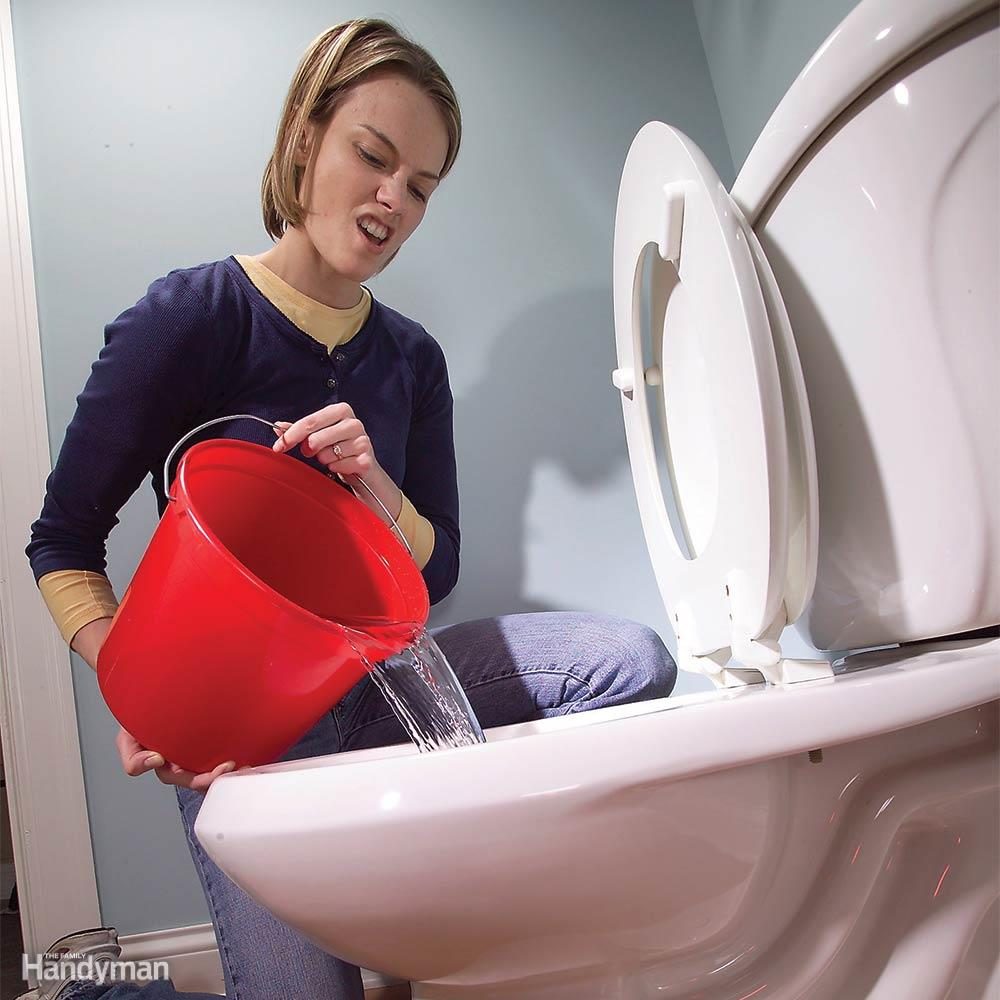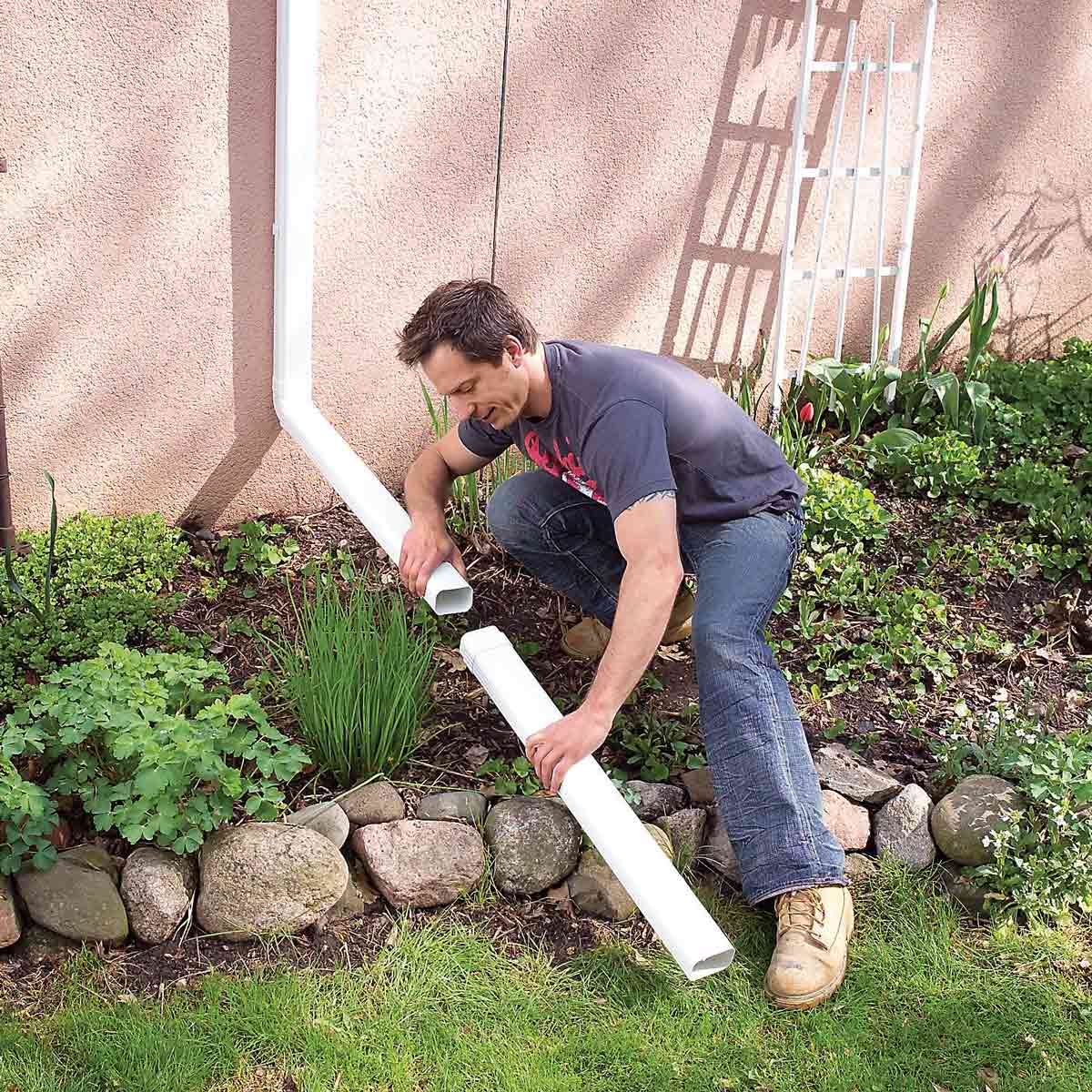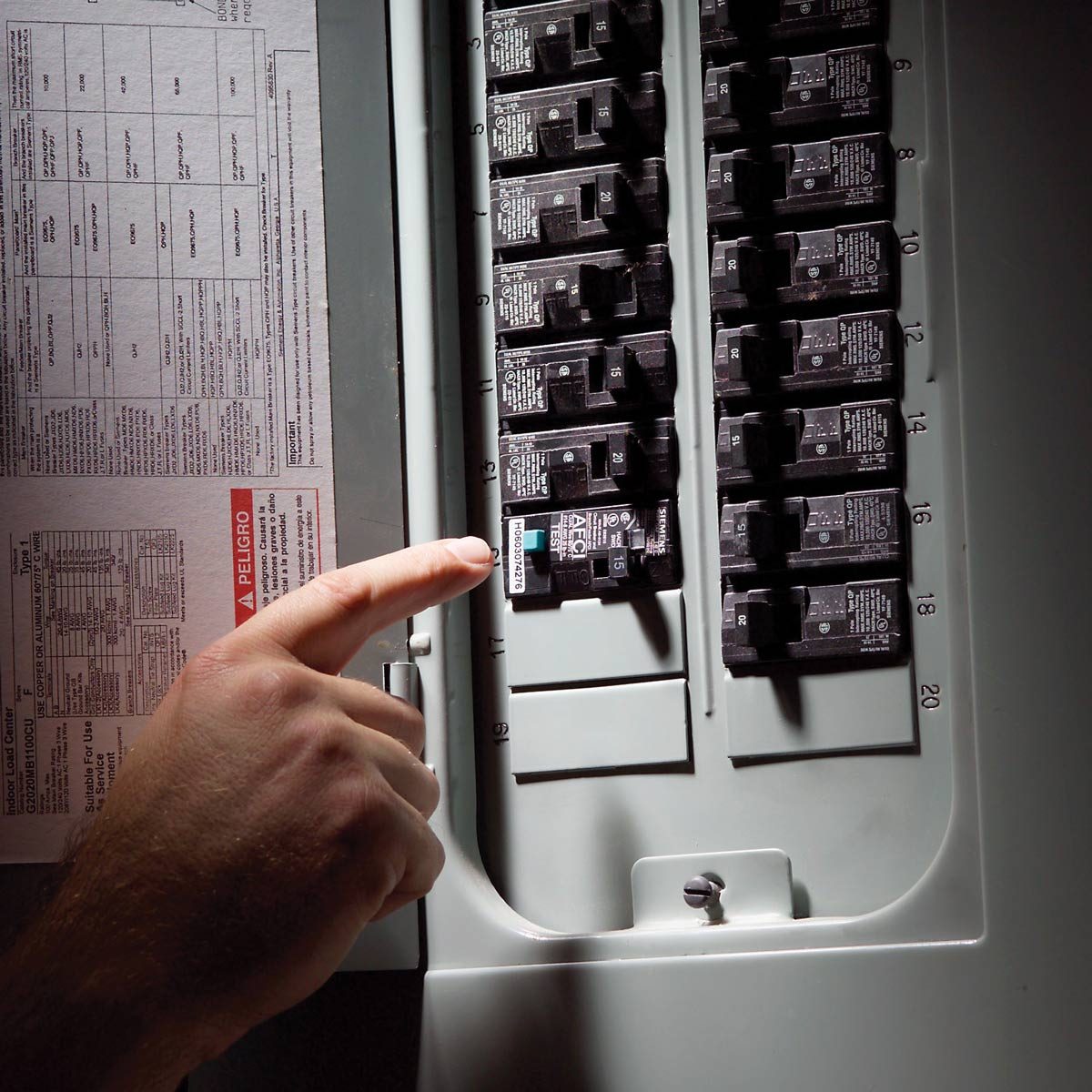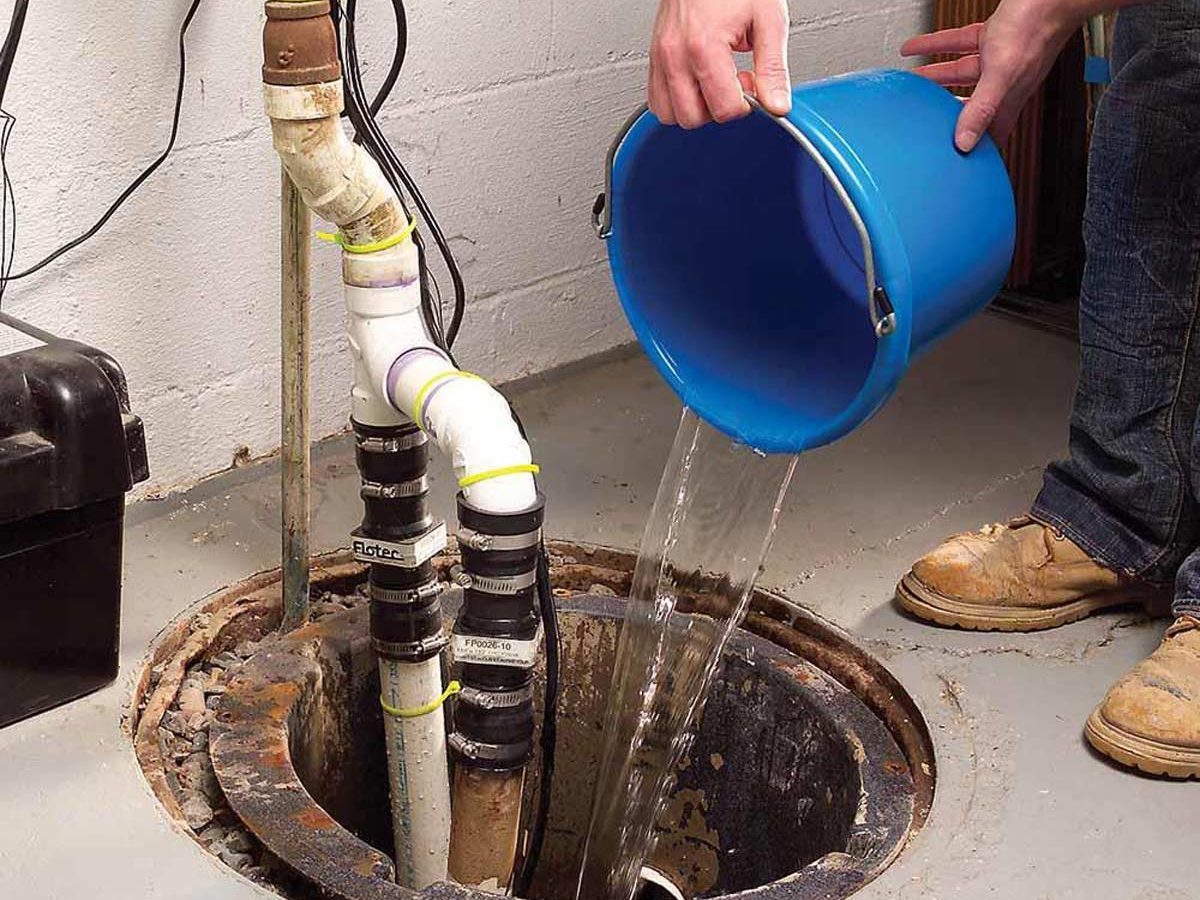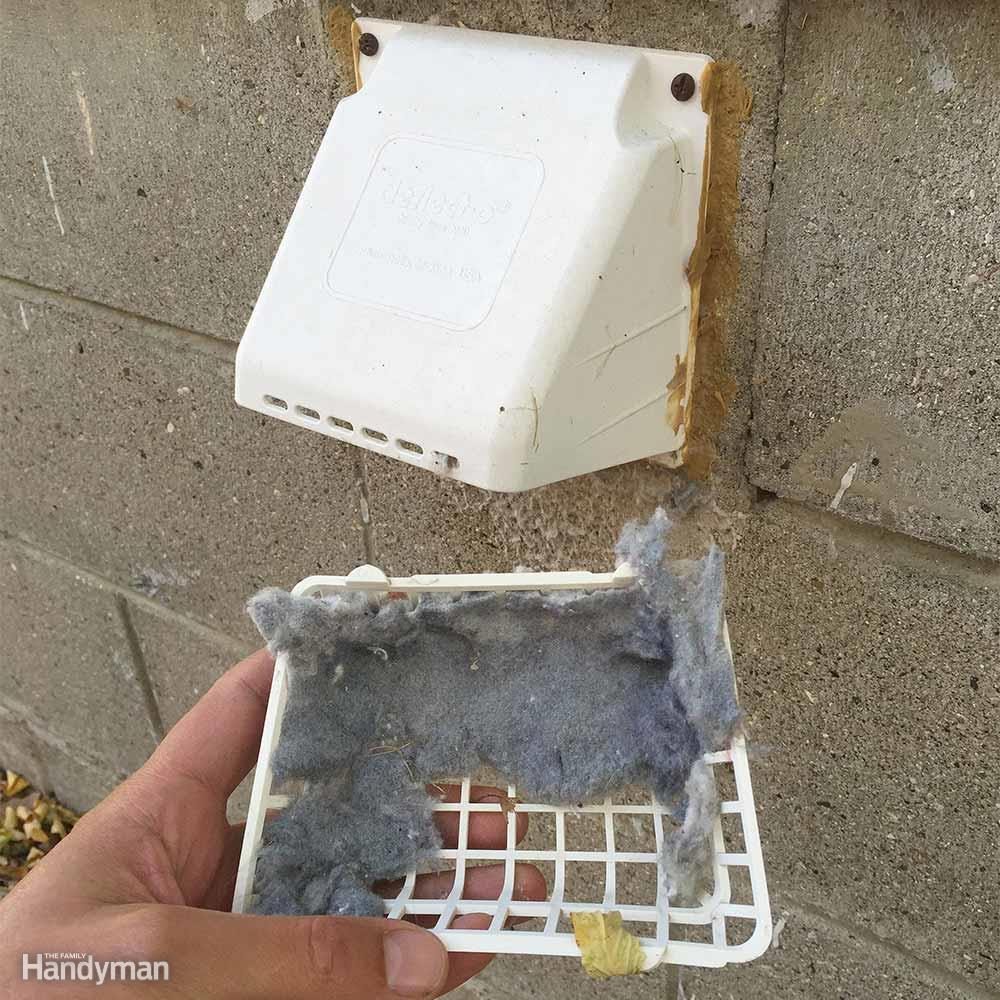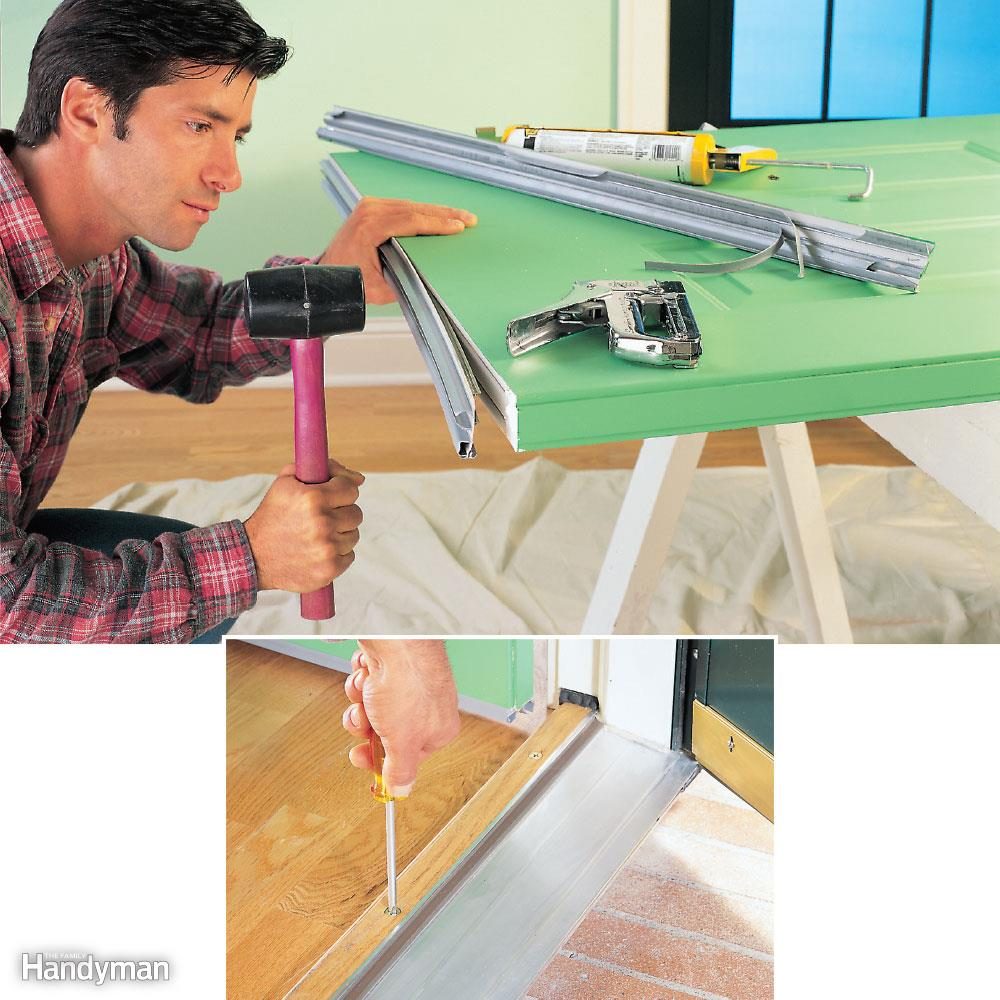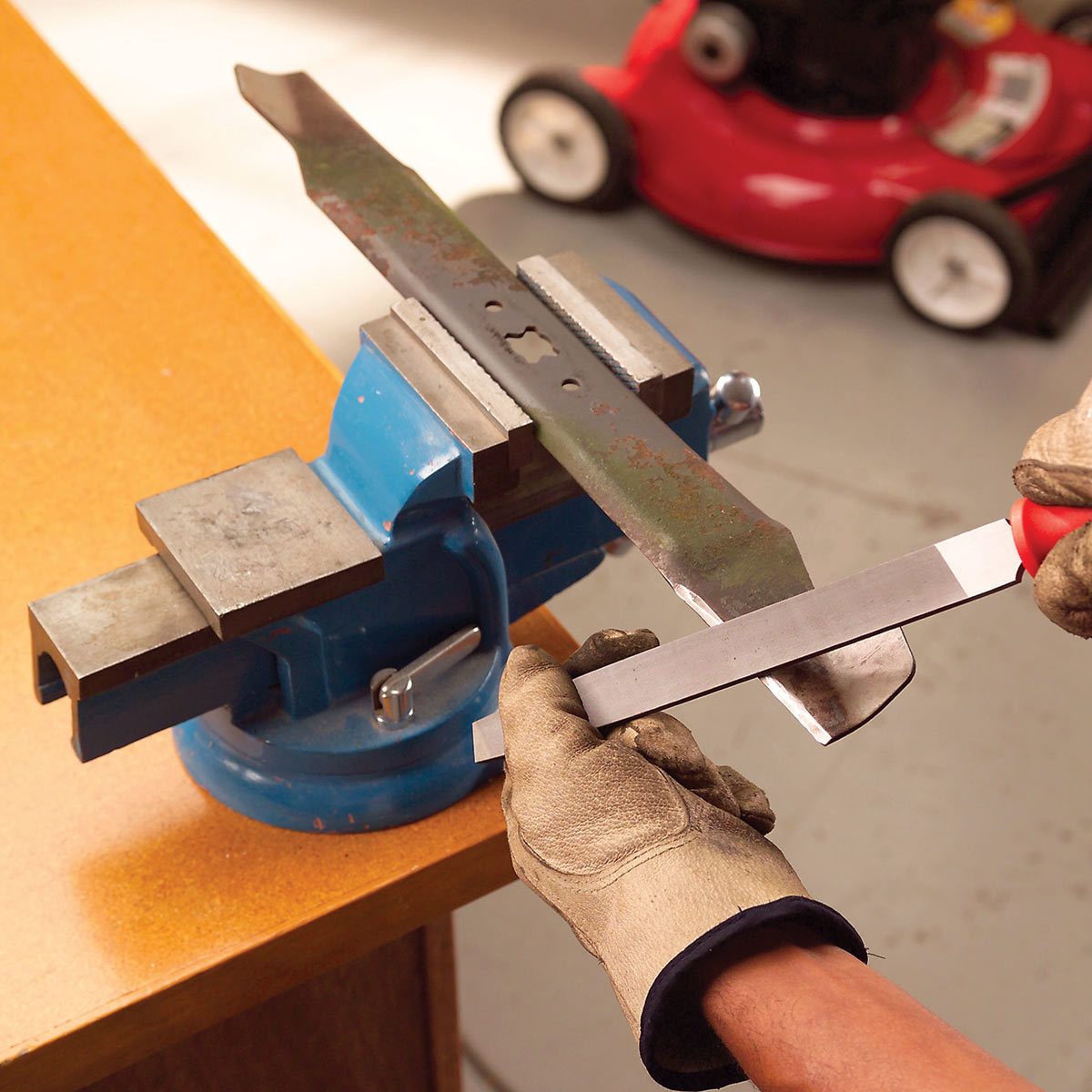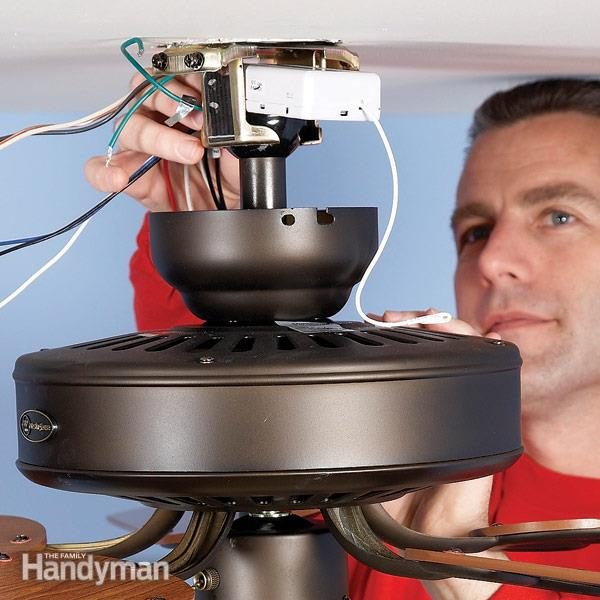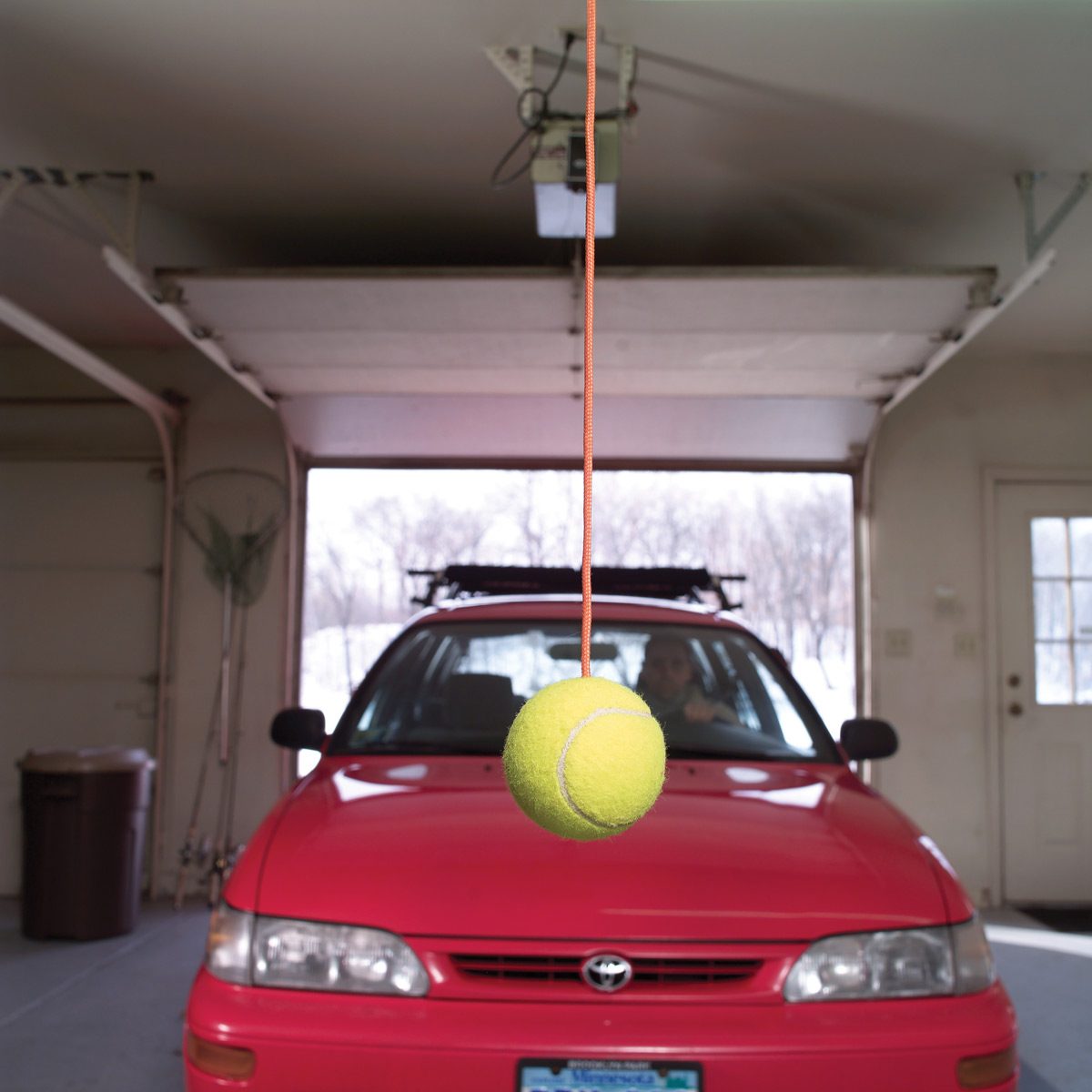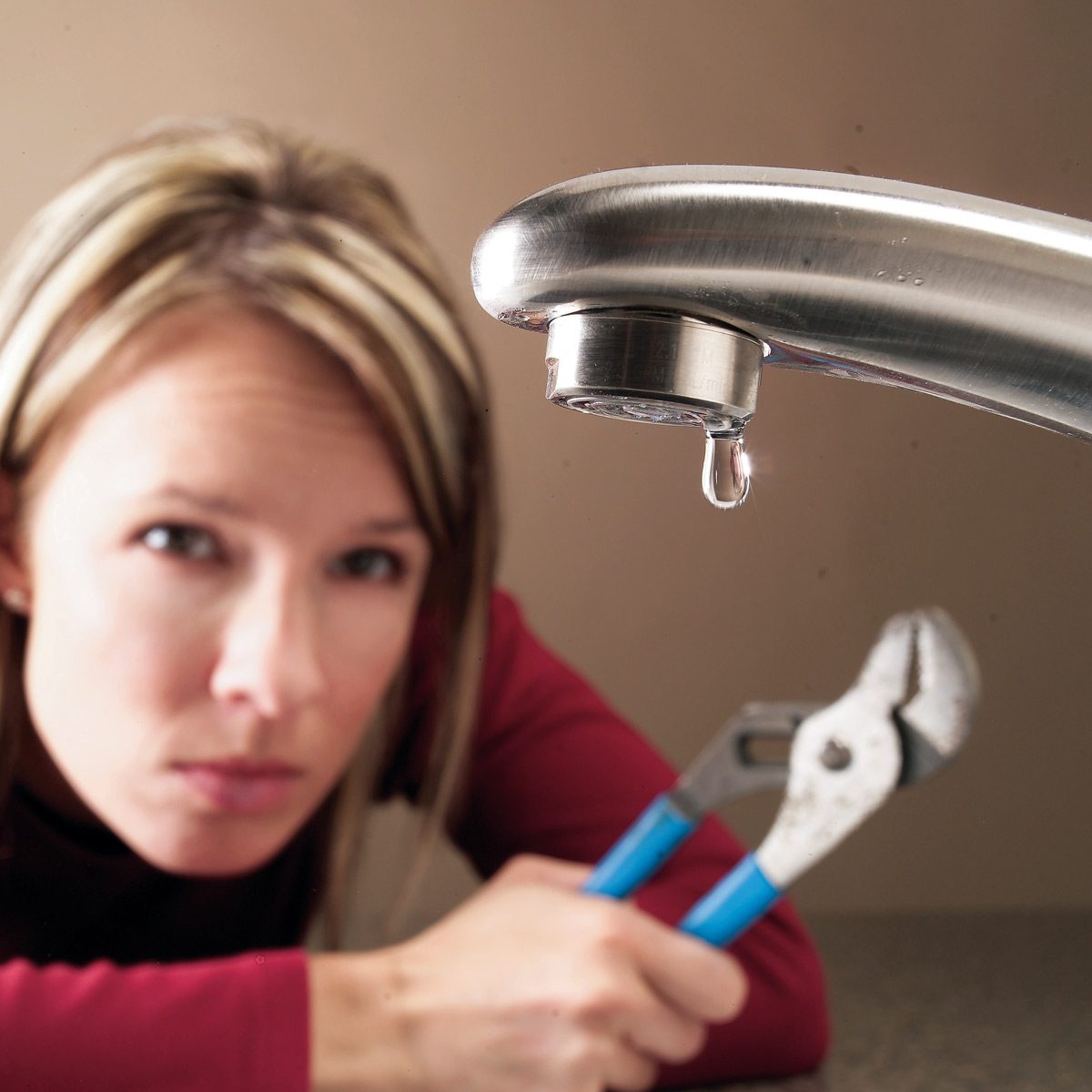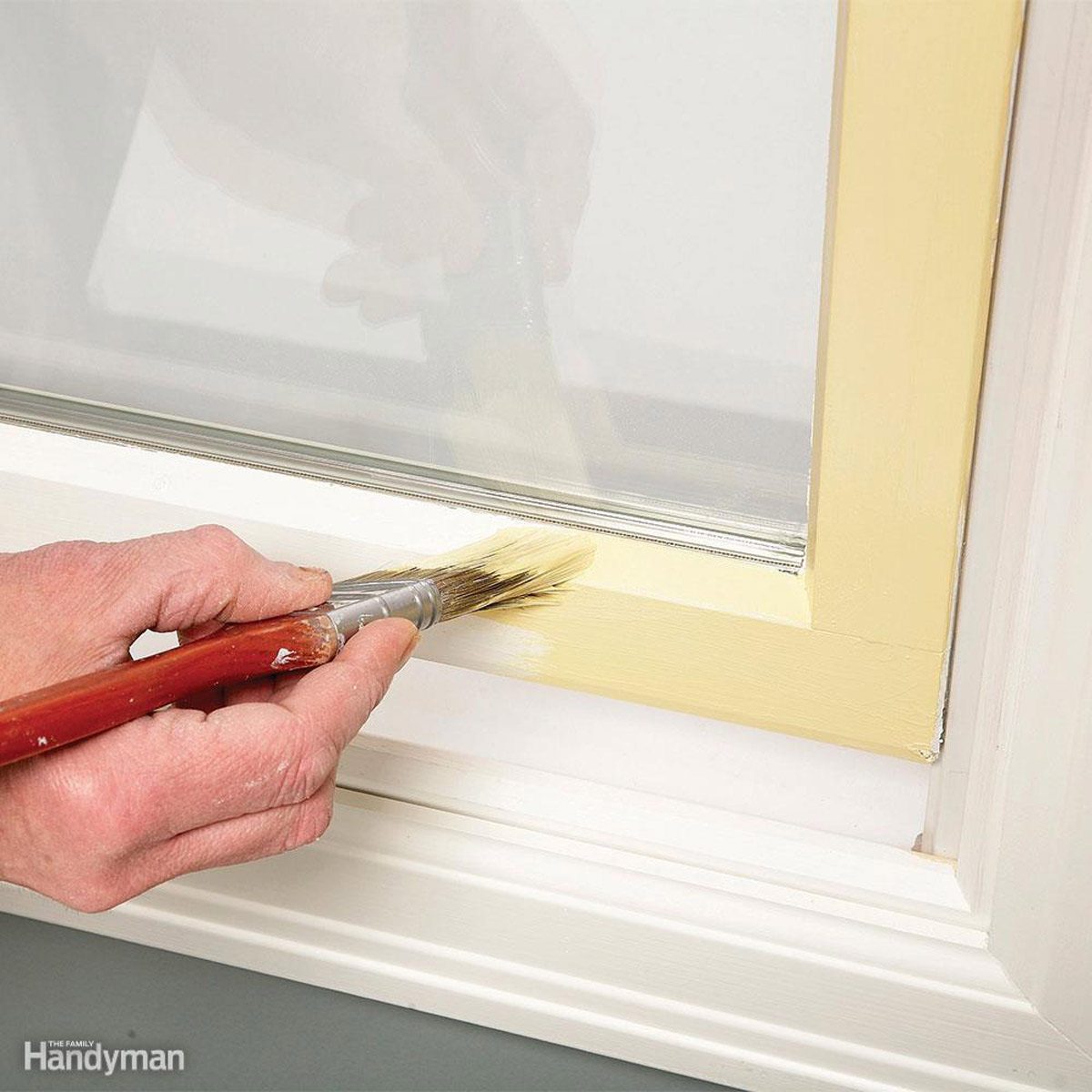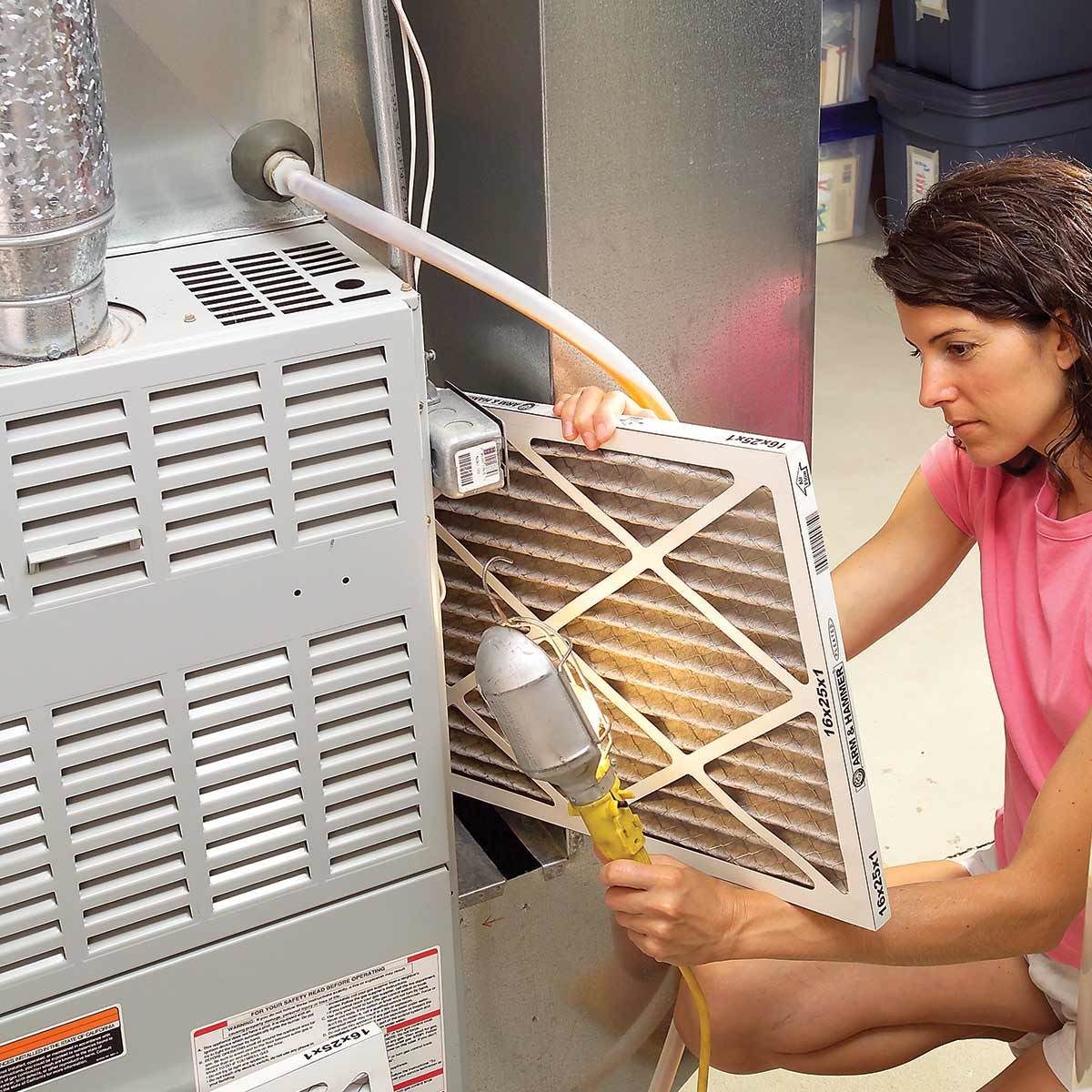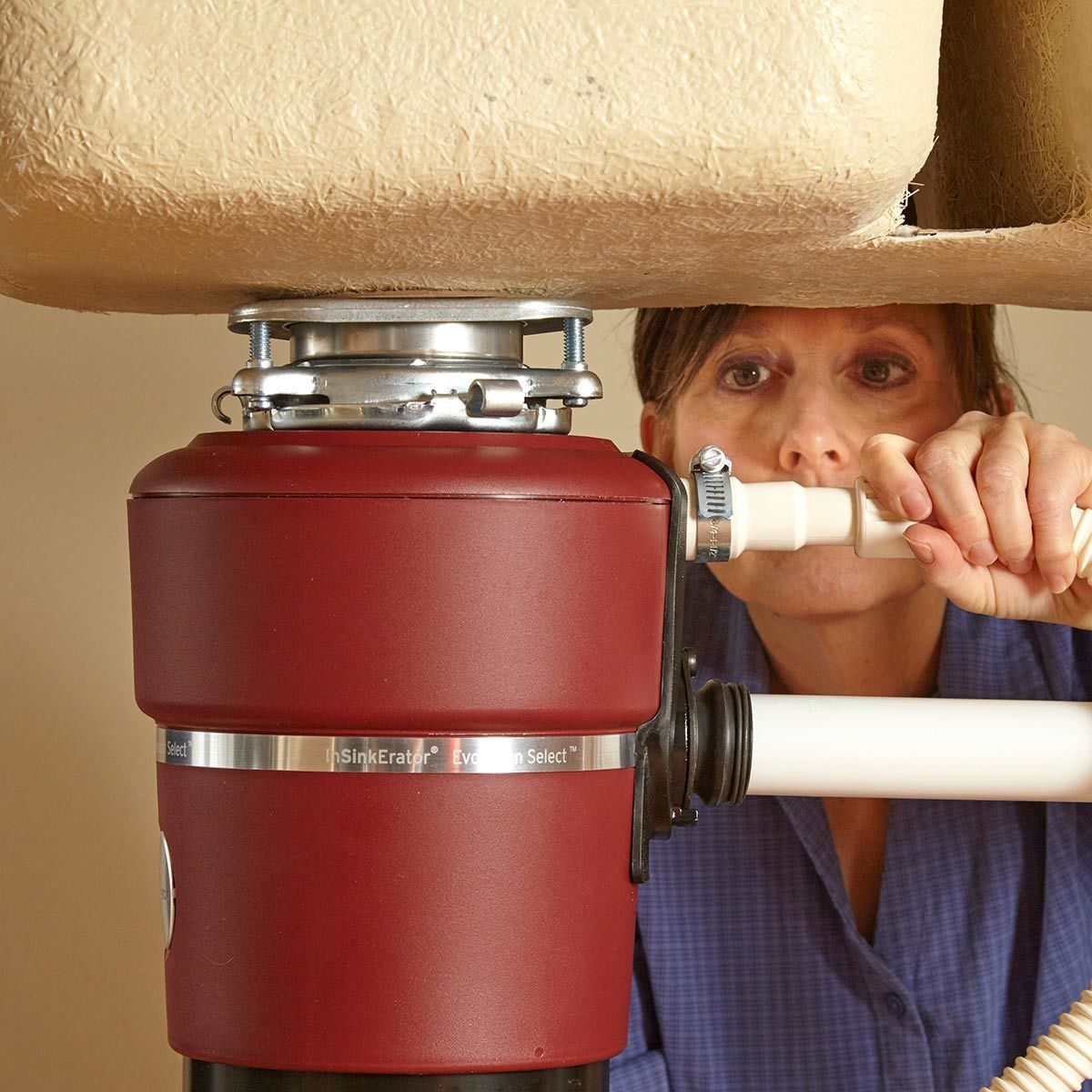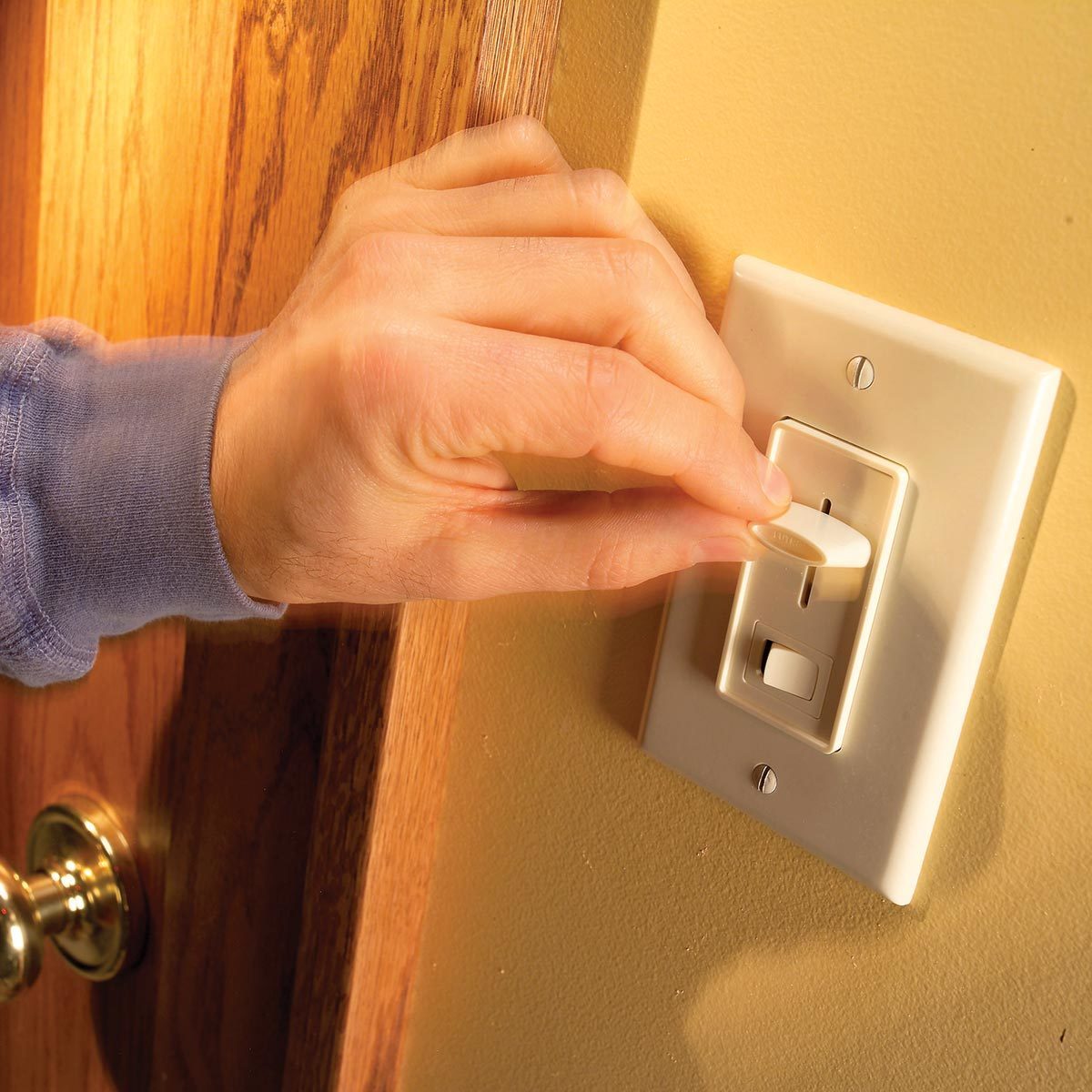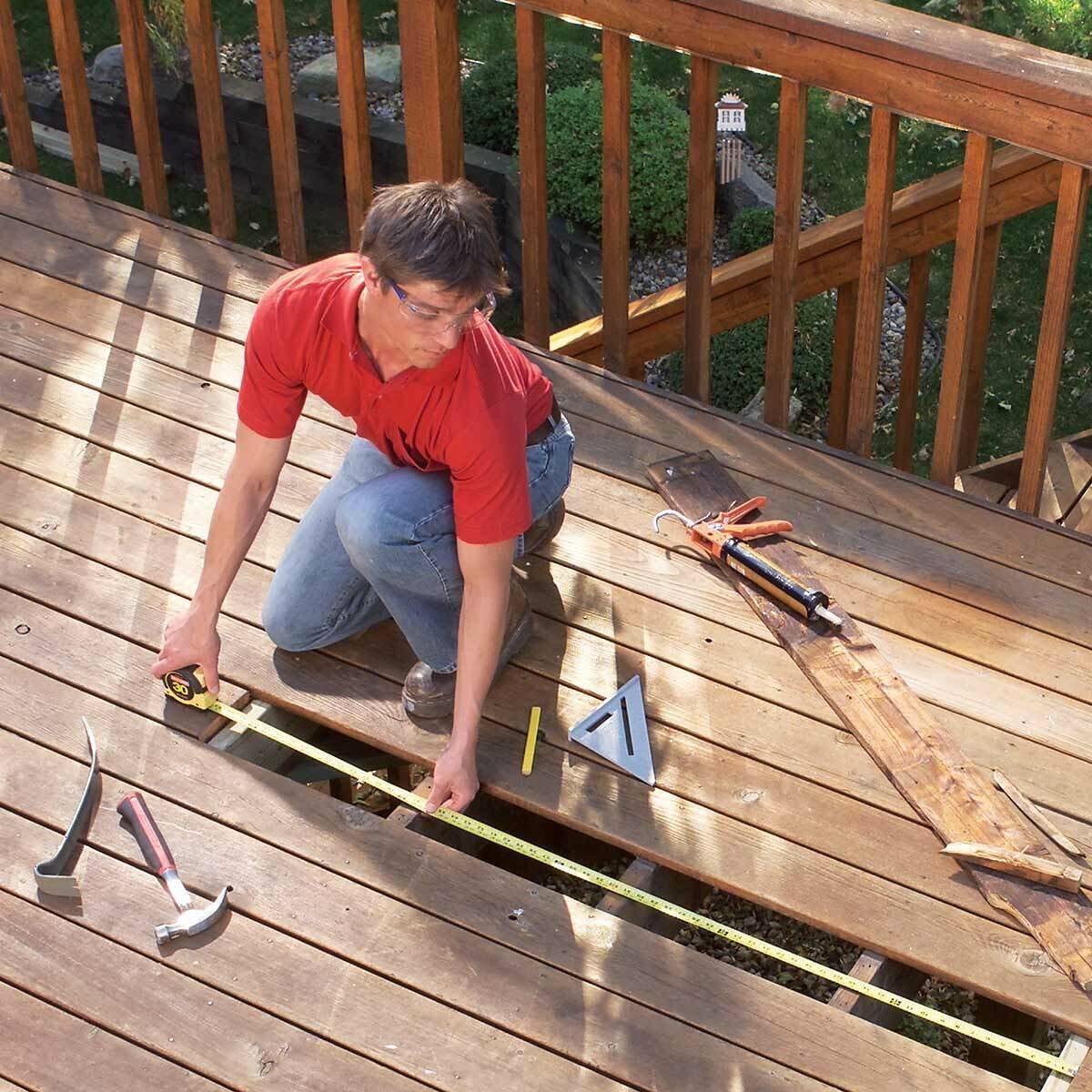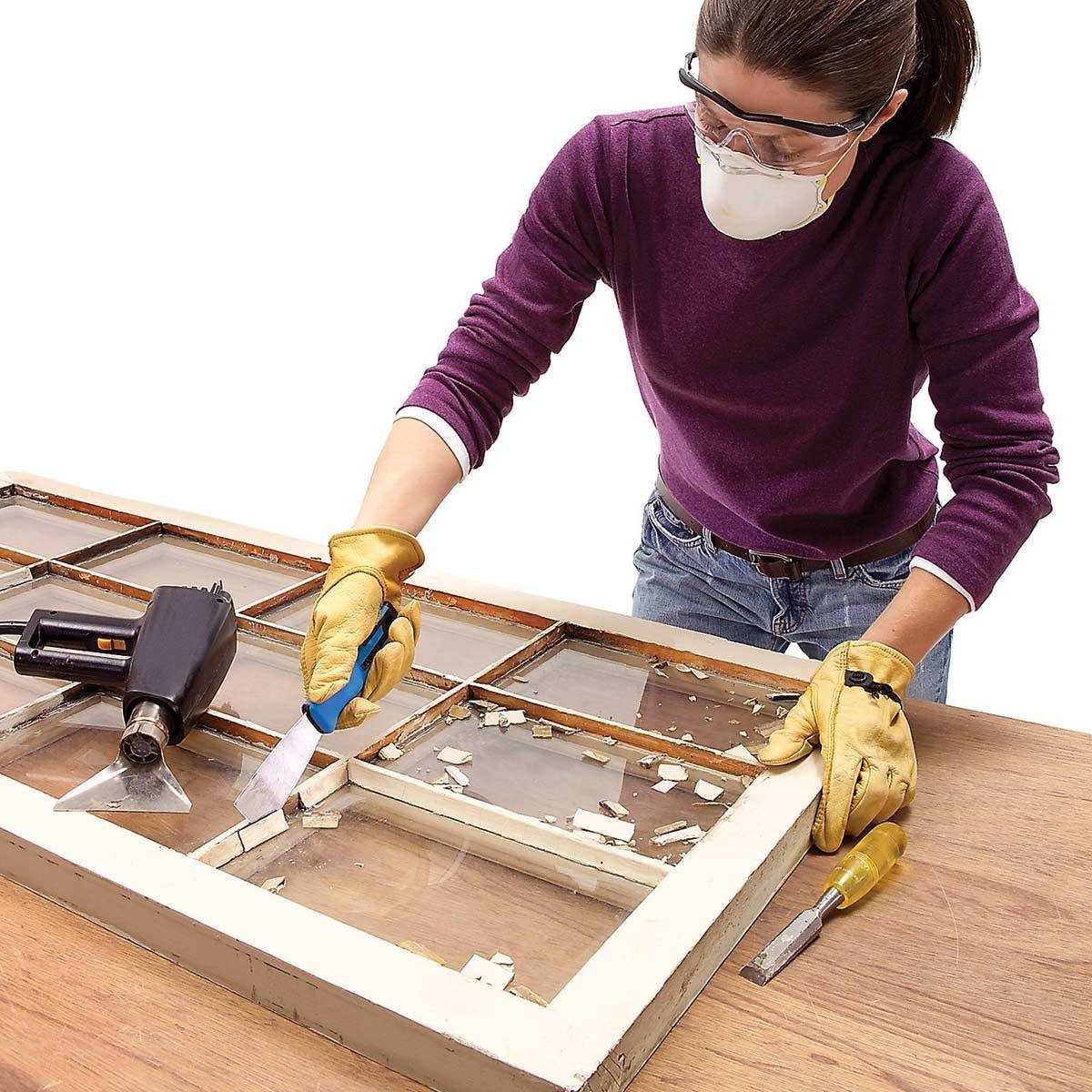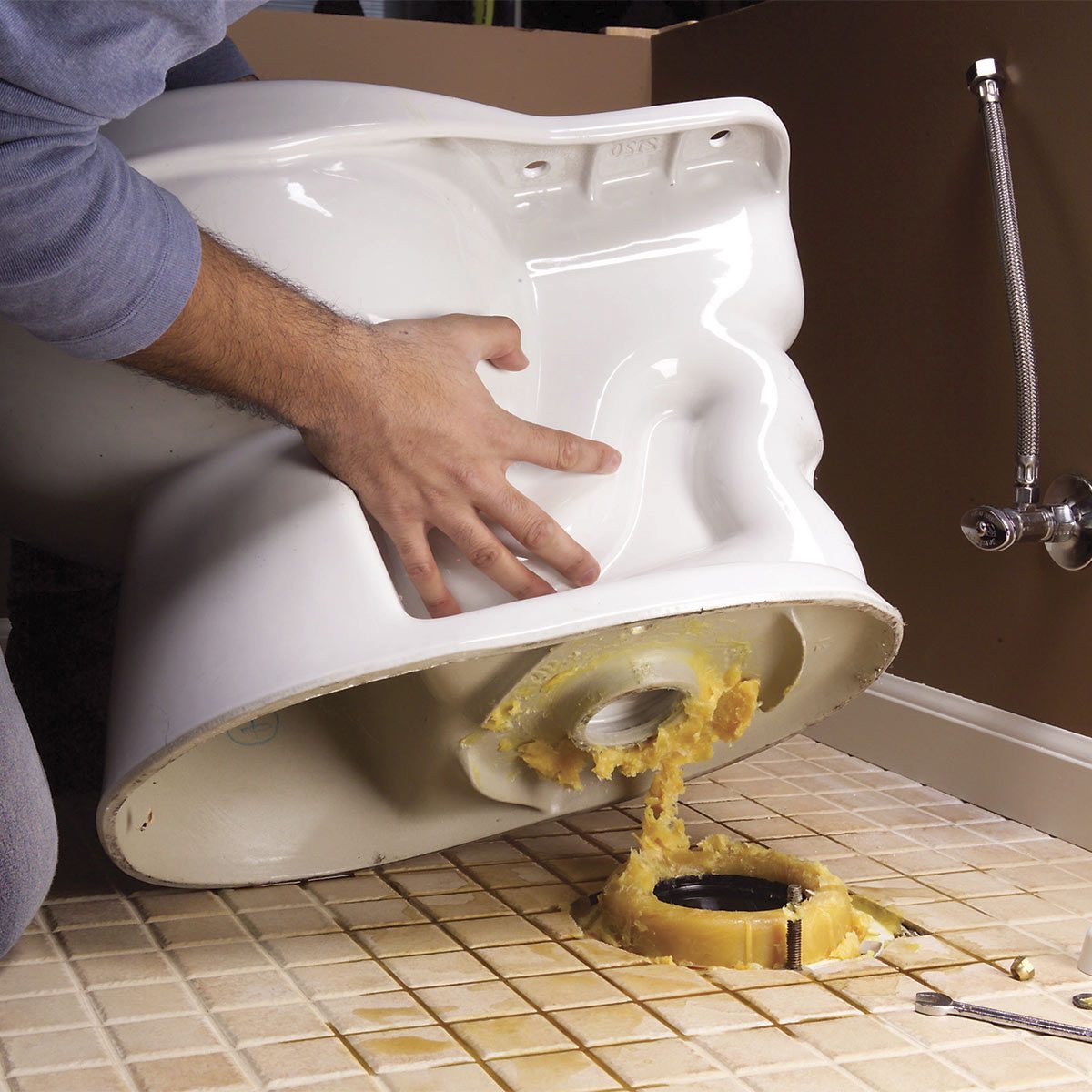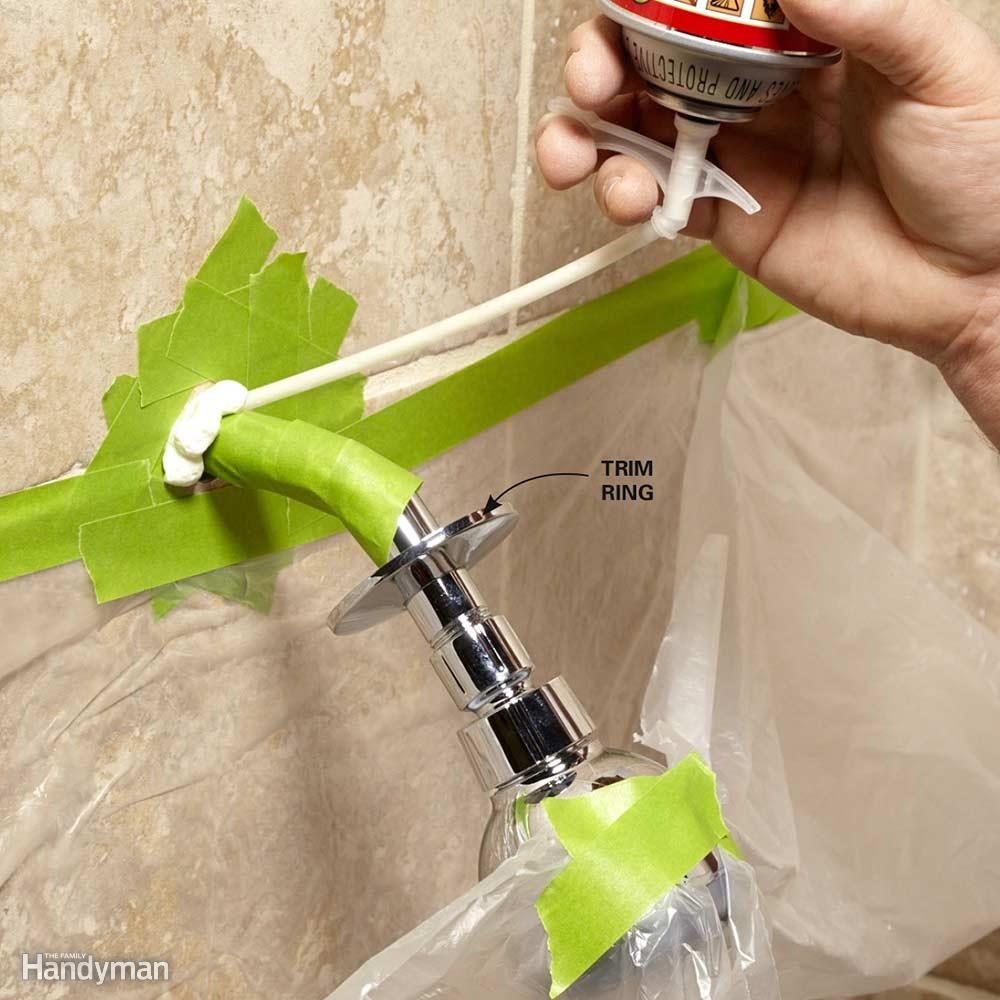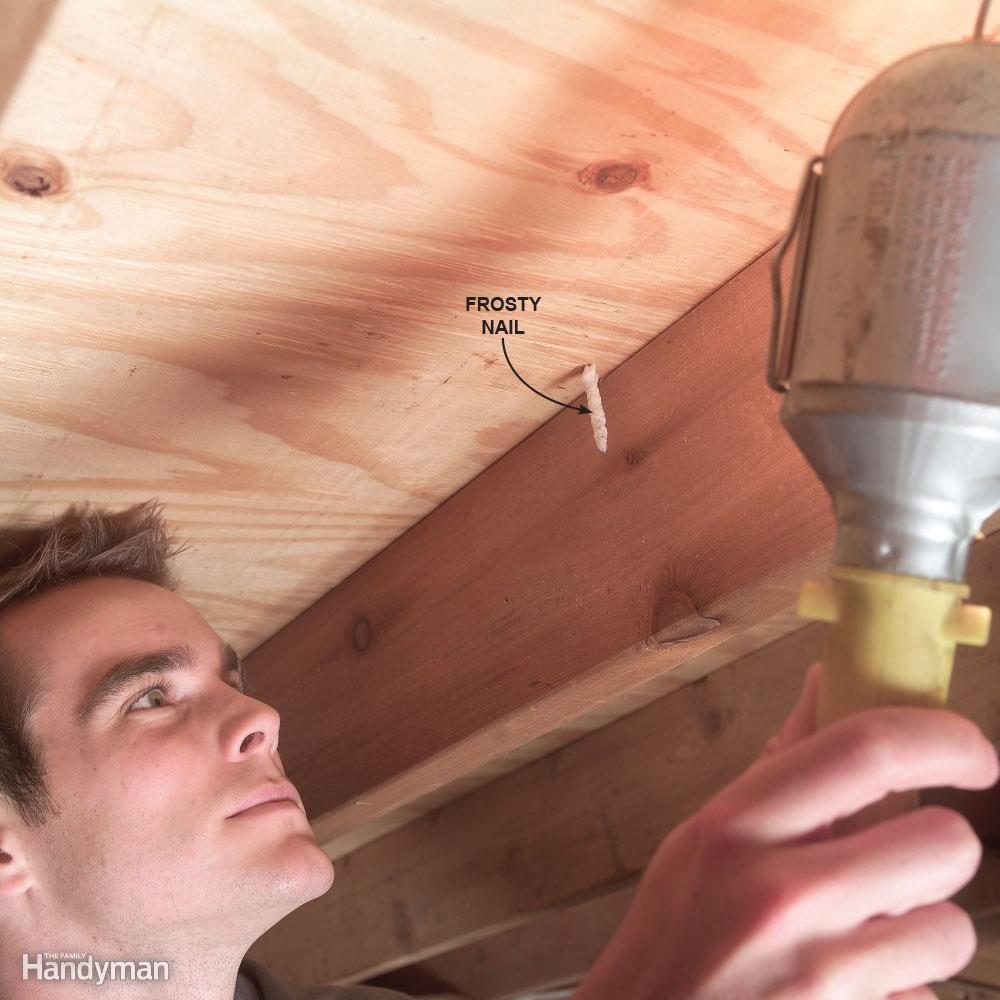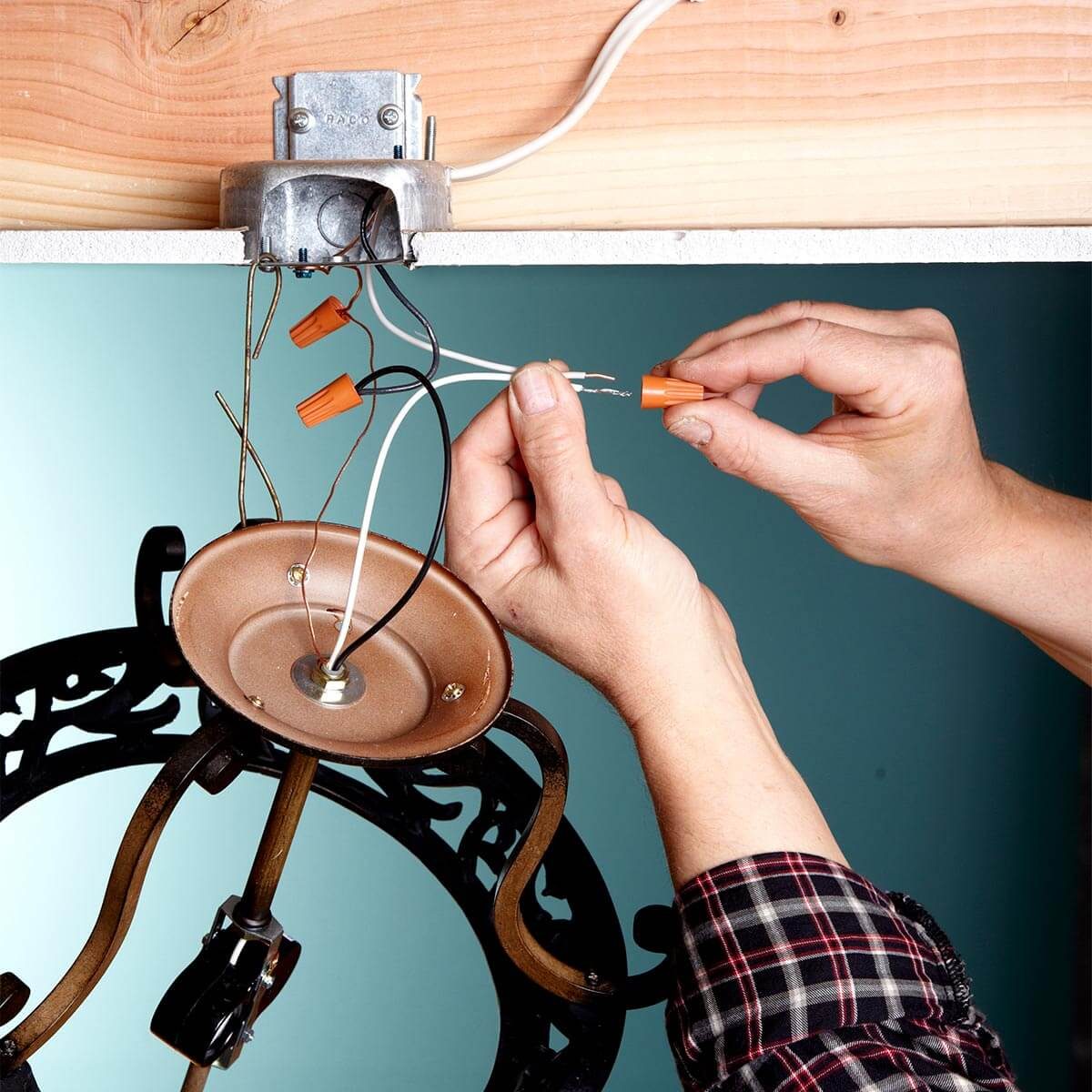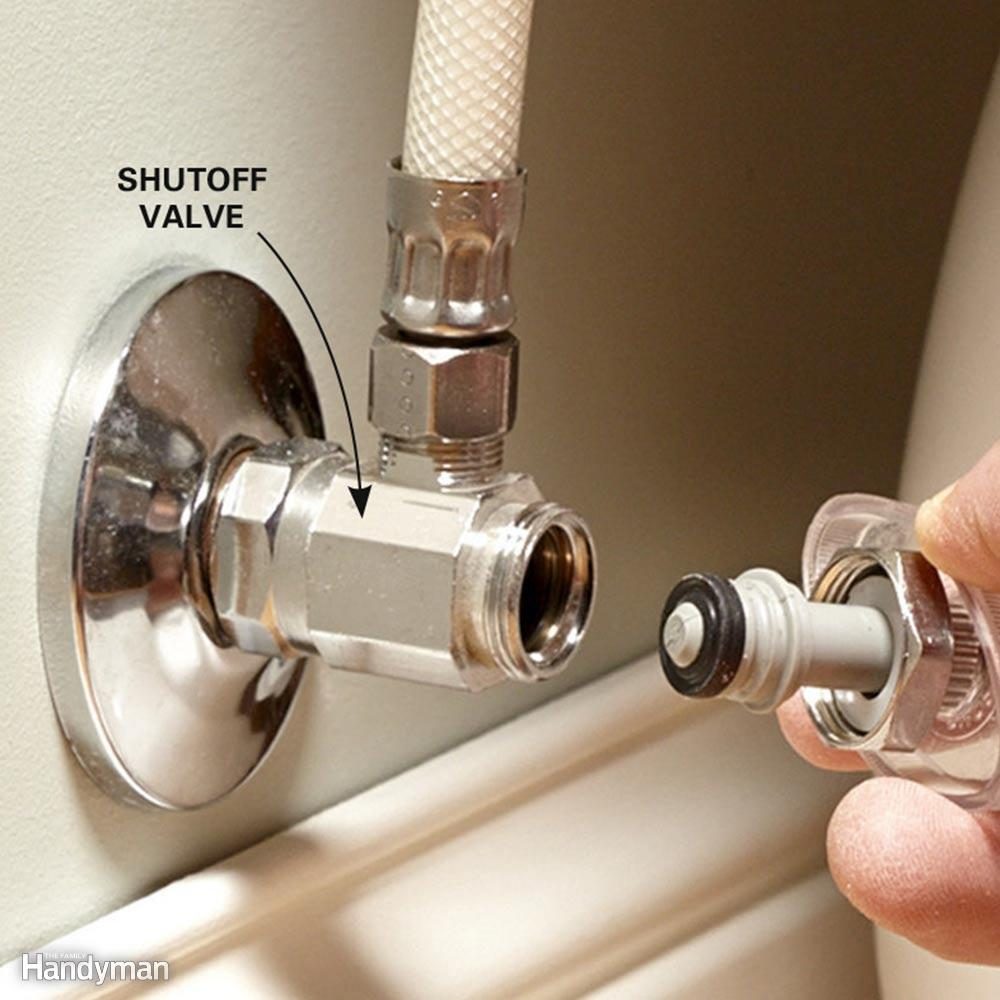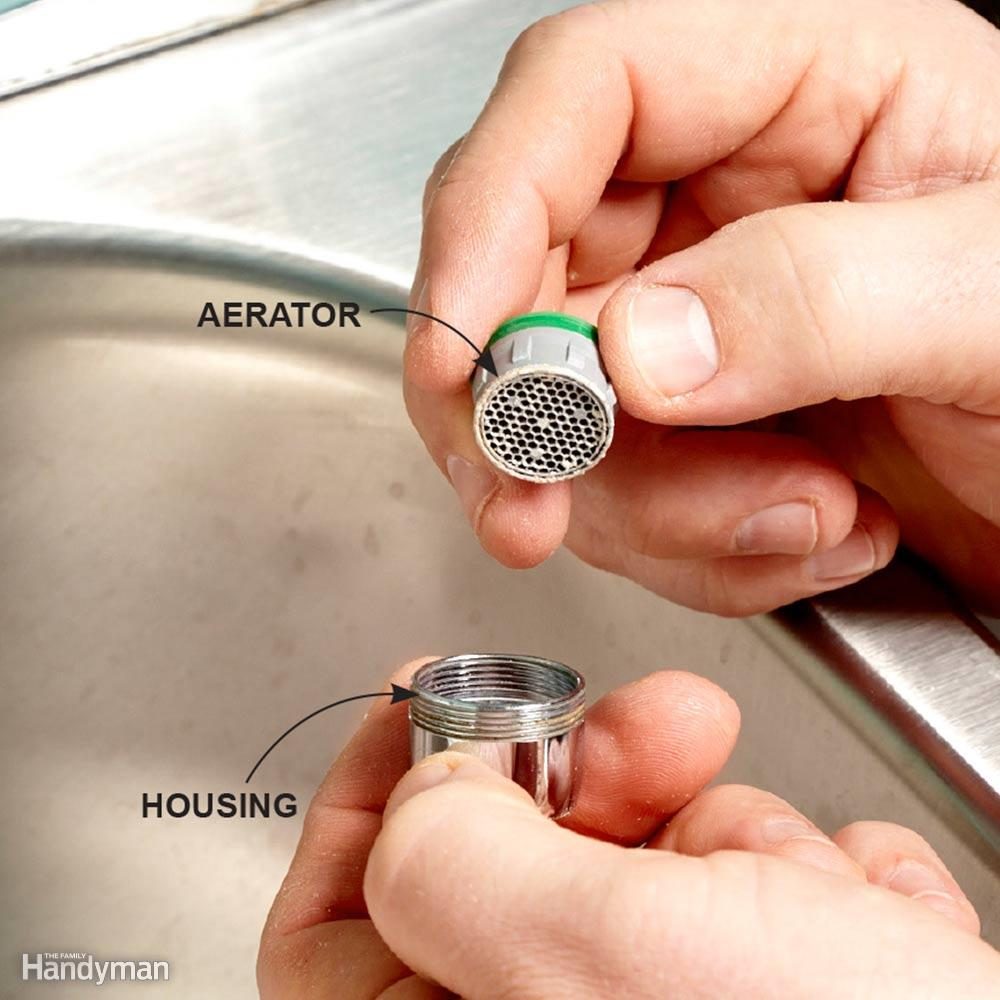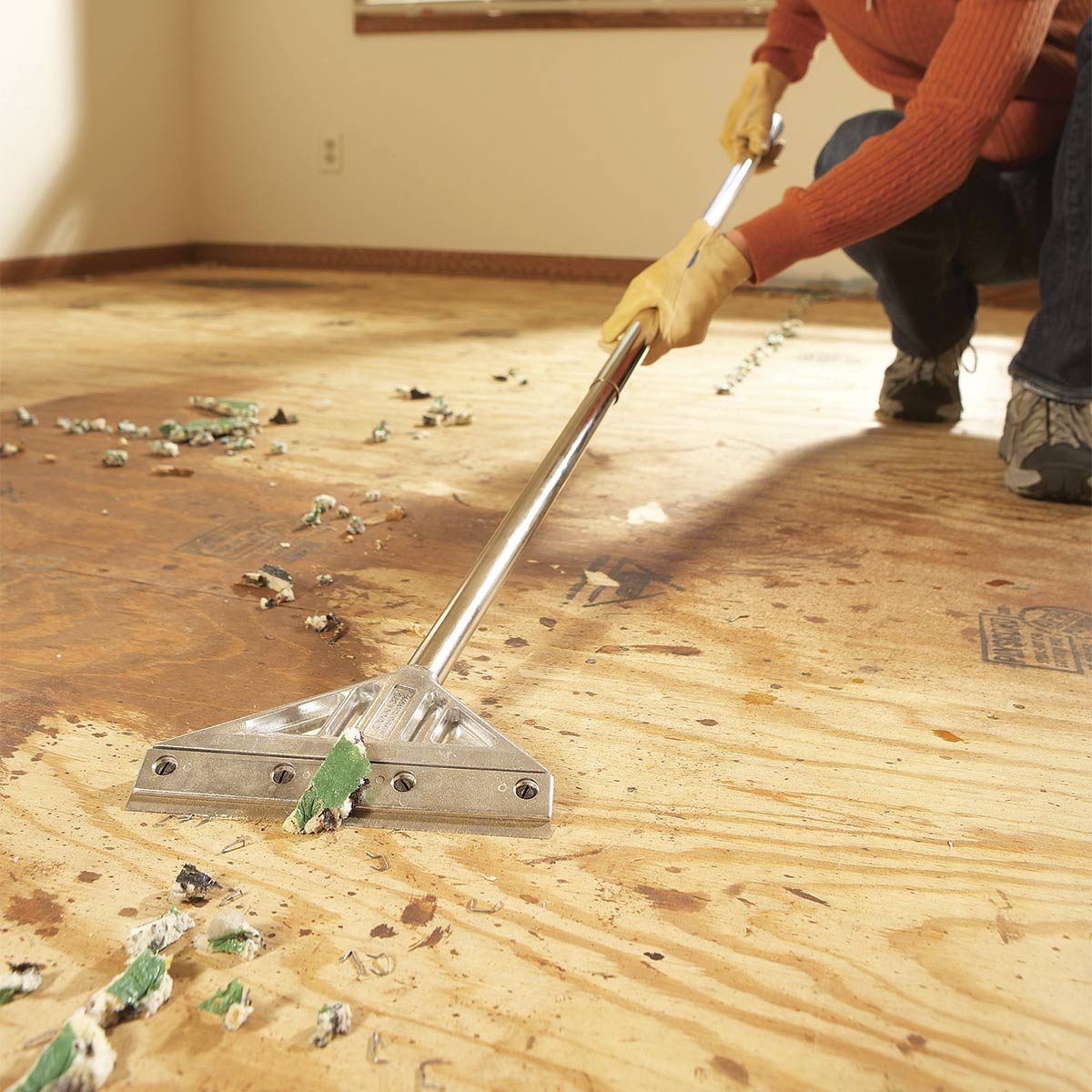1
/
40
How to Fix a Loose Doorknob
Tighten a loose doorknob that has hidden screws. Just pop off the cover plate and then all you need is a screwdriver.
And this is how you do it.
2
/
40
Touch-up Without Cleanup
No need to mess up a brush to fix a wall wound. Just dip an old washcloth in the paint and throw it away when you're done. A washcloth leaves the same texture as a paint roller, so your repair will blend nicely.
Here are
tricks for storing paint brushes overnight.
3
/
40
How to Flush the Toilet When the Power's Out: Flush With a Bucket
Even if a power outage stops your well pump or the city water supply, you can still flush the toilet. Dump a couple gallons into the bowl or fill the toilet tank. This works just as well as the usual flush, but won't refill the bowl.
Still clogged? Here's our guide for how to unclog a toilet.
4
/
40
Deal with Drainage
Water has the potential to cause problems in any home, and the skills to deal with drainage issues can be a huge money saver in the long run. Extending downspouts is an easy fix, but knowing how to
make a drainage plan is going to provide long-term results for minimal effort.
Plus:
Permanent Fixes for Damp Basements
5
/
40
Understand Electrical
Electrical overloads are easily created but can be incredibly dangerous for your home and everyone in it. A solid understanding of how the electrical circuits in your home function will not only make you a master homeowner, it will allow you to make as many DIY improvements as you want while maintaining the integrity of your electrical system.
Here's how.
Plus:
The 8 Most Common Electrical Code Violations DIYers Make
6
/
40
Test the Sump Pump or Risk a Flood
It's easy to forget about your sump pump, but it's important to make sure it's in good working order. If you don't, you could end up like the homeowner who returned from a weekend trip to discover his entire basement floor covered in 1/2 in. of water. After shutting down the power, he waded over to the sump pump and noticed it wasn't working. Upon closer inspection, he realized that the cable attached to the float must have gotten tangled somehow. It took him two seconds to untangle the cable, and then he spent the next 15 hours dragging out waterlogged carpet, running the wet/dry vac and moving fans around.
To avoid a similar disaster, be sure your pump has a vertical float switch. Also, check your pump at least a couple times a year by dumping water into the basin to make sure everything is working properly.
7
/
40
Clean Dryer Vents or Waste Energy and Risk a Fire
A plugged dryer vent will cause your dryer to run inefficiently, and that's bad. A plugged dryer vent could also cause a house fire, and that could be deadly! Dryers that are centrally located in houses are most prone to plugging because of the longer ducts. Excess lint is only one reason ducts get clogged; nesting pests and stuck exhaust hood flappers can also cause backups. Stronger odors and longer dry times are two signs your vent is plugged.
You'll have to remove the vent from the back of the dryer to clean it. Suck debris from the ducts with a wet/dry vac, or ream them out with a cleaning kit that includes a brush on a long flexible rod that attaches to a power drill. The kits are available at home centers. If your ducts need replacing, get smooth metal ducts, which will stay cleaner longer than the rough corrugated surface of flexible ducts. Avoid plastic ducting altogether; it can be a fire hazard. Plus:
Slash Heating Bills
8
/
40
How to Stop Under-the-Door Air Leaks
If you can feel the breeze and see daylight under your entry door, it's costing you big-time. It also means you need to adjust your door threshold or install a new door sweep. Door sweeps start at $10. The hardest part about replacing them is usually taking off the door.
Start by adjusting the threshold. Newer versions have screws that raise and lower them. Turn all of the threshold screws until the door opens and closes without much drag and any draft is eliminated. If that doesn't work, or your threshold doesn't have adjustment screws, replace the door sweep.
Close the door and pop out the hinge pins with a pin punch to remove the door. Set the door on a work surface and remove the old door sweep. Caulk the ends of the door, then install the replacement sweep. Some sweeps are tapped into place and stapled along the door bottom; others are screwed to the side along the door bottom. If a drafty sliding patio door is your problem,
here's how to fix it.
9
/
40
How to Sharpen Lawnmower Blades
Sharpening the blades is an important part of a lawn mower tune up. The hardest part about
sharpening a lawnmower blade is detaching the blade safely from your lawnmower. Once the blade is safely removed and held in a vise, a good file is all you need to add an edge to the blade. Just remember to make sure that you are sharpening the right side of the blade! When detached, it can sometimes be difficult to tell which way the sharpest edge is facing.
10
/
40
Suck Out Drain Clogs
A wet-dry vacuum slurps clogs out of plugged drains. Even plumbers use this trick sometimes. If you need to increase suction, seal around the nozzle with a wet rag.
11
/
40
Sizing a Ceiling Fan
Ceiling fans can save energy and money for heating and cooling. A quick rule of thumb for sizing them matches the diameter of the fan with the largest dimension of a room. For 12 ft. or less, use a 36-in. fan. For 12 to 16 ft., use a 48-in. fan. For 16 to 18 ft., use a 52-in. fan. And for dimensions larger than 18 ft., install two fans.
Placement of a ceiling fan for adequate air circulation is 7 ft. above the floor with the blades 8 to 10 in. from the ceiling. And to move more air at low speed, a fan with five blades is best.
Regarding energy savings, research has proven that ceiling fans can save energy during the cooling season by creating a gentle breeze. You get your savings then by raising your thermostat by a minimum of 2 degrees. This decreases air conditioning energy used by 10 to 15 percent, or 5 to 8 percent per degree. By reversing your fan (so it runs clockwise) during winter, you pull heat from the ceiling and push it down to the floor for more even heat.
12
/
40
Tennis Ball Parking Guide
If you have ever wondered why a tennis ball was hanging from your friend's garage ceiling, here's why. To park your car in perfect position every time, hang a tennis ball from the garage ceiling so it just touches the windshield. It will show you precisely where to stop. No guesswork!
Here are
16 Easy Garage Space-Saving Ideas.
13
/
40
How to Seal Outlets and Ceiling Boxes
14
/
40
How to Fix Leaks and Drips
15
/
40
How to Change Locks
Unfortunately, lost keys are a part of life. But why waste money on a locksmith when you can re-key a lock yourself? You can change your locks by removing the cylinder and adjusting the pins. Never worry about the cost of a new lockset again.
Here's how to master this skill.
Plus:
Upgrade Door Locks With Keyless Entry Systems
16
/
40
Paint Like a Pro
The ability to do a good paint job is a skill that, once learned, will save you gobs of money over the course of your home ownership. While it takes patience and detail, fresh paint can make your home seem larger, cleaner and more modern—not too bad for a few brushes, paint and a weekend or two. Check out our collection of
painting tips aimed at making your painting projects look like you hired a pro.
17
/
40
How to Fix a Running Toilet
There is a four-step strategy for fixing a running toilet. The fix will not only give your toilet a stronger flush, it can lower your water bill and it’s a task you should know how to do by age 40.
18
/
40
g-stockstudio/Shutterstock
How to Fix Squeaky Floors
Silence those squeaky floors. This quick fix for silencing floor squeaks will take you just a day. Bonus: You don’t need any special tools.
19
/
40
How to Fix a Crack in Drywall
It doesn’t matter if your son’s basketball got away from him or you nicked the wall moving a piece of furniture—at some point you’ll be faced with a crack in the drywall. You’ll need a taping knife and utility knife, along with some drywall tape, pre-mixed joint compound and setting type compound to fix the crack so it doesn’t come back. By age 40 you’ve probably had to do some drywall repair at some point.
20
/
40
How to Fix Cracked Grout
Even the best tile jobs will succumb to cracking grout at some point. If the grout between your bathroom floor tiles is crumbling, there is a quick fix that will save you from tearing up the floor and starting over.
21
/
40
Dragon Images/Shutterstock
How to Fix an Unbalanced Washing Machine
You threw a heavy load of towels in the washer and now it’s unbalanced. With a level, pliers and a pry bar, you can have the washer balanced again in five minutes. By age 40 you’ve probably grown tired of calling a repair man for the job.
22
/
40
Andrey_Popov/Shutterstock
How to Fix Common Refrigerator Problems
Maybe your refrigerator isn’t cooling as well as it should, or perhaps the ice maker suddenly stops working. Many refrigerator issues are simple DIY fixes.
23
/
40
How to Fix a Water Heater Pilot Light
There could be a few reasons the pilot light on your water heater goes out. A common cause is a bad thermocouple, which shuts off the gas to the pilot light. This simple fix will cost you $20, if you do it yourself.
25
/
40
Garbage Disposal Repair
A garbage disposal is a bit scary when it's turned on and the blades are noisily chopping up kitchen waste. But, if your disposal gets stinky, fear not. It's easy to
clean out the gunk and get rid of the smell. If the splash guard needs replacing, you can
do that in 20 minutes! If you need to replace the entire disposal
you can replace it yourself.
26
/
40
Light Switches
Don't automatically avoid a project just because it involves electricity: Replacing a standard light switch with a dimmer switch is a very doable DIY project, as is replacing a three-way switch.
27
/
40
Repairing Decks
Many things can go wrong with a deck. Missing screws, warped boards, squeaky nails, wobbly railings, fortunately, many of these problems are well within the scope of the average DIYer. Inspect your deck for seven common deck problems and then repair whatever needs fixing.
28
/
40
Fix Windows
Obviously you can't glue broken glass back together. But, for windows that get stuck, let in drafts or have moisture issues, there are DIY solutions. Fix old windows, double-hung windows,
window glass glazing and screens. You can also stop window drafts and learn how to avoid and remove window condensation.
If you want to take on a larger task, you can even
replace your windows!
29
/
40
How to Replace a Toilet
30
/
40
Foam a Loose Showerhead
31
/
40
Solution for a Small Leak
Some roof leaks are tough to locate. Sometimes the water shows up at a ceiling spot distant from the leak. If your ceiling has a plastic vapor barrier between the drywall and the attic insulation, push the insulation aside and look for flow stains on the plastic. Often water runs to openings in the vapor barrier, such as at ceiling light fixtures.
If you can't see any telltale flow marks, and since the stain is fairly small, look at the underside of the roof for 'shiners.' A shiner is a nail that missed the framing member, in this case when the carpenter nailed the roof sheathing to the rafters. Moisture that escapes into the cold attic from the rooms below often condenses on cold nails. Sometimes you can spot this if you climb up into your attic on a cold night. The nails will look white because they're frosted. When the attic heats up a bit during the day, the frost melts and drips, then the nails frost up at night again and so on. The solution is to simply clip the nail with a side-cutting pliers.
32
/
40
Lubricate a Lock with a Pencil
33
/
40
Fix a Broken Light Fixture
Replacing a
light fixture is one of those DIY jobs that's theoretically quick and simple, but often becomes a three-hour series of problems. We talked with two of our master electricians. They've seen all of those frustrations and offered these tips to help DIYers through the job quicker and safer.
34
/
40
Fix a Shutoff Valve
There's nothing worse than starting a sink or toilet repair only to find that the
shutoff valve won't shut off. Some shutoff valves are easy to replace. For those that aren't, turn off the main water valve, remove the packing nut, and then unscrew the stem and take it to the hardware store to find a replacement washer. Clean any grit out of the valve body and pop on the new washer. The valve will work like new.
35
/
40
Air Filter
It is instinctual for homeowners to contact an HVAC tech when they notice irregularities in their cooling or heating system. These irregularities could be a direct result of a dirty or clogged air filter. We encourage homeowners to check their filters and replace if necessary. It’s also beneficial for homeowners with pets, carpet, or for homes near fields or construction zones to have multiple filters for convenient replacement.
Pro Tip: Mark your calendars! 1-in. filters should be changed every month, 2-in. filters should be changed every 2 months and 4 to 5-in. filters should be changed every 6 to 12 months.
36
/
40
Clothes Dryer Repair Guide
Most dryer problems can be fixed in an hour with a few basic tools and a continuity tester or multimeter, and you can do the work yourself with these simple instructions.
37
/
40
Restore Free Flow to a Faucet
When a kitchen or bathroom faucet loses pressure or starts spraying to the side, it's usually due to a
dirty aerator screen. Luckily, cleaning a screen is an easy job. Start this fix by closing the drain plug (so you don't drop parts down the drain). Then remove the aerator using a rag or masking tape so you don't mar the finish with your pliers.
To remove the sand and other deposits, soak the aerator in vinegar, then scrub it with a toothbrush. This usually solves the problem. If you have to disassemble the aerator to clean it, lay out the parts in the order you removed them so you can reassemble them correctly. Still having issues?
Do a showerhead deep clean.
38
/
40
How to Adjust Oven Temperatures
If your oven cooking times are off, recalibrate your oven temperature to match an accurate oven thermometer. The procedure is in your oven’s instruction manual. Learn how to adjust oven temperatures.
39
/
40
Electric Stove Repair
You can solve most electric range burner problems yourself and avoid the expensive service call. It’s quick and easy to replace a burner or bad burner socket. Read the electric stove repair tips.
40
/
40
How to Remove Carpet Yourself
Depending on where you live, an installer will charge $3 to $5 per square yard for tear-out. By
removing the carpet from a 12 x 15-ft. room, you'll save $60 to $100 for an hour's work. Talk to your installer to find out exactly what you'll save by doing it yourself.

